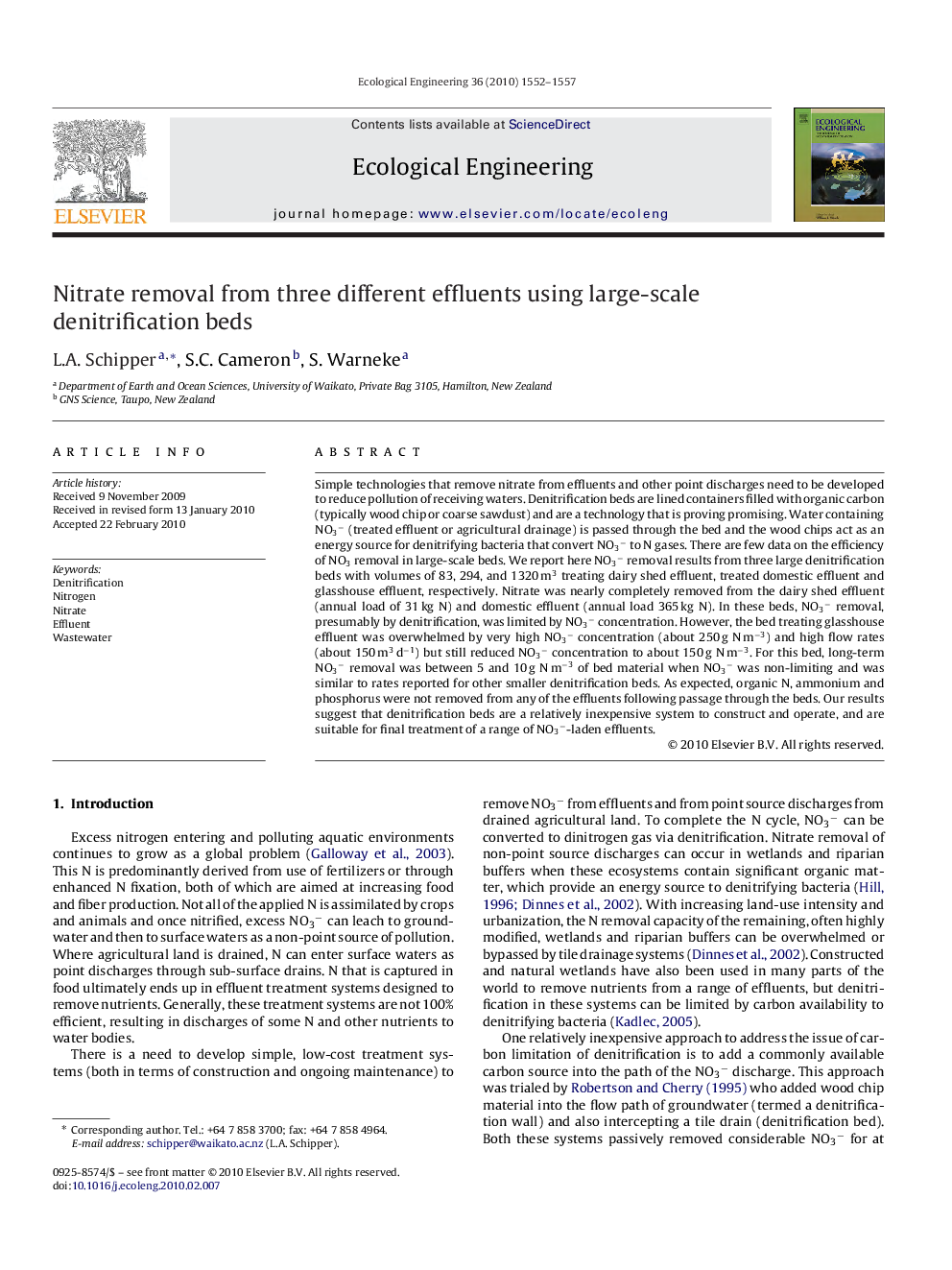| Article ID | Journal | Published Year | Pages | File Type |
|---|---|---|---|---|
| 4390343 | Ecological Engineering | 2010 | 6 Pages |
Simple technologies that remove nitrate from effluents and other point discharges need to be developed to reduce pollution of receiving waters. Denitrification beds are lined containers filled with organic carbon (typically wood chip or coarse sawdust) and are a technology that is proving promising. Water containing NO3− (treated effluent or agricultural drainage) is passed through the bed and the wood chips act as an energy source for denitrifying bacteria that convert NO3− to N gases. There are few data on the efficiency of NO3 removal in large-scale beds. We report here NO3− removal results from three large denitrification beds with volumes of 83, 294, and 1320 m3 treating dairy shed effluent, treated domestic effluent and glasshouse effluent, respectively. Nitrate was nearly completely removed from the dairy shed effluent (annual load of 31 kg N) and domestic effluent (annual load 365 kg N). In these beds, NO3− removal, presumably by denitrification, was limited by NO3− concentration. However, the bed treating glasshouse effluent was overwhelmed by very high NO3− concentration (about 250 g N m−3) and high flow rates (about 150 m3 d−1) but still reduced NO3− concentration to about 150 g N m−3. For this bed, long-term NO3− removal was between 5 and 10 g N m−3 of bed material when NO3− was non-limiting and was similar to rates reported for other smaller denitrification beds. As expected, organic N, ammonium and phosphorus were not removed from any of the effluents following passage through the beds. Our results suggest that denitrification beds are a relatively inexpensive system to construct and operate, and are suitable for final treatment of a range of NO3−-laden effluents.
